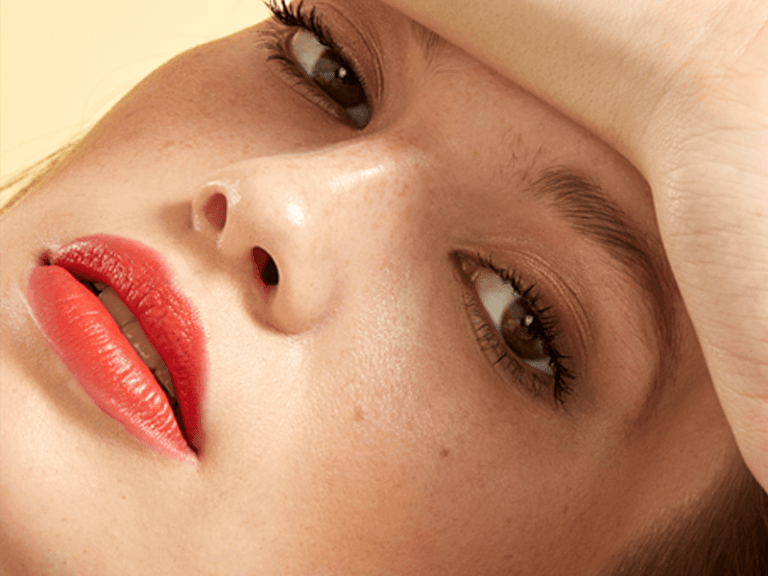A Guide to Coordinating Makeup Colours

When it comes to choosing which makeup to wear, most of us will reach for those trusty few colours we carry in our makeup bags. Those staple products that you feel lost without and are the ones you keep coming back to time and time again. But have you ever really thought about whether these colours you are putting together actually compliment each other?
You might have a pinky coloured blush, a red lip and maybe a purple eyeshadow that are your go-to products. But wearing these colours together is not going to be the most flattering look for you. A mishmash of colours can completely throw off your whole look. It can even make you look like you are wearing more makeup than you are, as the colours will appear obvious.
Follow my makeup colour coordination tips for a more polished, elegant look.
1. Coordinating a red lip.
If you are going for a red lip, a hot pink blush is going to provide far too much colour. A red lip is a bold statement. I have always preferred the less is more approach with the rest of the look when it comes to wearing a red lip. In fact, I would stay away from any colour all together and make your lips the central focus. Instead, warm up the skin with bronzer, either a matte or shimmer will work well. Then add a little highlighter to bring those cheekbones forwards. Go for a simple eye makeup look with either a slick of black winged liner and mascara. Or if you like a little more drama, a shimmery bronze shade swept all over the lid will vamp up your look for the evening.
2. Choose colours in the same family.
If you are going for a peach coloured lip, choose a peach coloured blush. If you are sporting a pink lip, go for a pink blush. Keeping the colours you use in the same family as each other is much more flattering on the skin. It will make you look more awake, fresh, and well rested.
The rules differ slightly here when it comes to nude or brown shades. Take a close look at the colour, whether its a lipstick or a blush, and try and find the undertones in that shade. Does it have a slight pink tinge to it? If so, choose more of a pink blush. Can you see its more of a peach or orange nude? If so, a coral or peach blush would work well. If you can’t find any undertone and the colour looks like its pure brown, nude or beige, then almost any colour will be complimentary.
3. Colourful Eyeshadow.
Just as you would when wearing a red lip, make one feature on your face the focal point of your look. I love encouraging women to experiment with a bit more colour, but always make a point to say that it should be confined to one feature. Wearing coloured eyeshadow on your lids can really help to make the eye colour stand out. Follow the same rule as above and choose colours in the same family as each other to avoid it looking too garish. You could try wearing a dark blue with a turquoise, a purple with a pink, or an olive green with an emerald green.
When it comes to finding complimentary blush and lip colours to pair with a colourful eyeshadow, its always best to keep it understated to make the eyes the main focus. Follow the rules described above, and choose colours with the same undertone as your eyeshadow.
If in doubt, ask a friend! Sometimes it is tricky to see what looks wrong with our makeup when we are looking at ourselves in the mirror (especially if there is bad lighting!). Get yourself in good natural lighting and ask a friend for their opinion, they might be able to see things that look slightly ‘off’ about your makeup and help you fix it.
Disclaimer
These are “rules” for those of you that are completely stuck when it comes to matching colours together. This should be used as a guide, rather than hard and fast rules! Makeup is an art form and should therefore reflect our creativity. We should be encouraged to experiment with our makeup, to find what works for us and compliments our own individual style.


 John Masters Organics - Nourishing Defrizzer for Dry Hair
John Masters Organics - Nourishing Defrizzer for Dry Hair 

